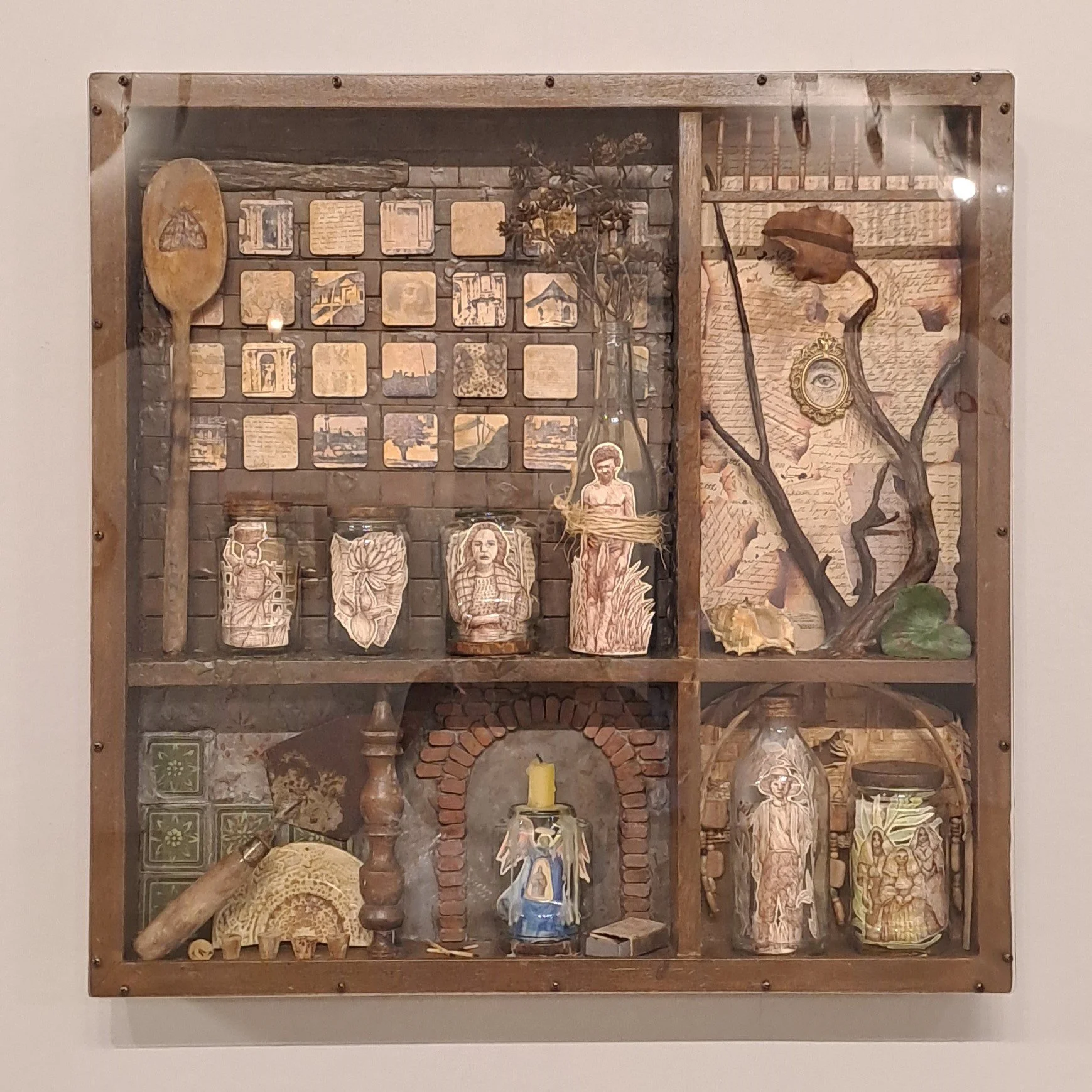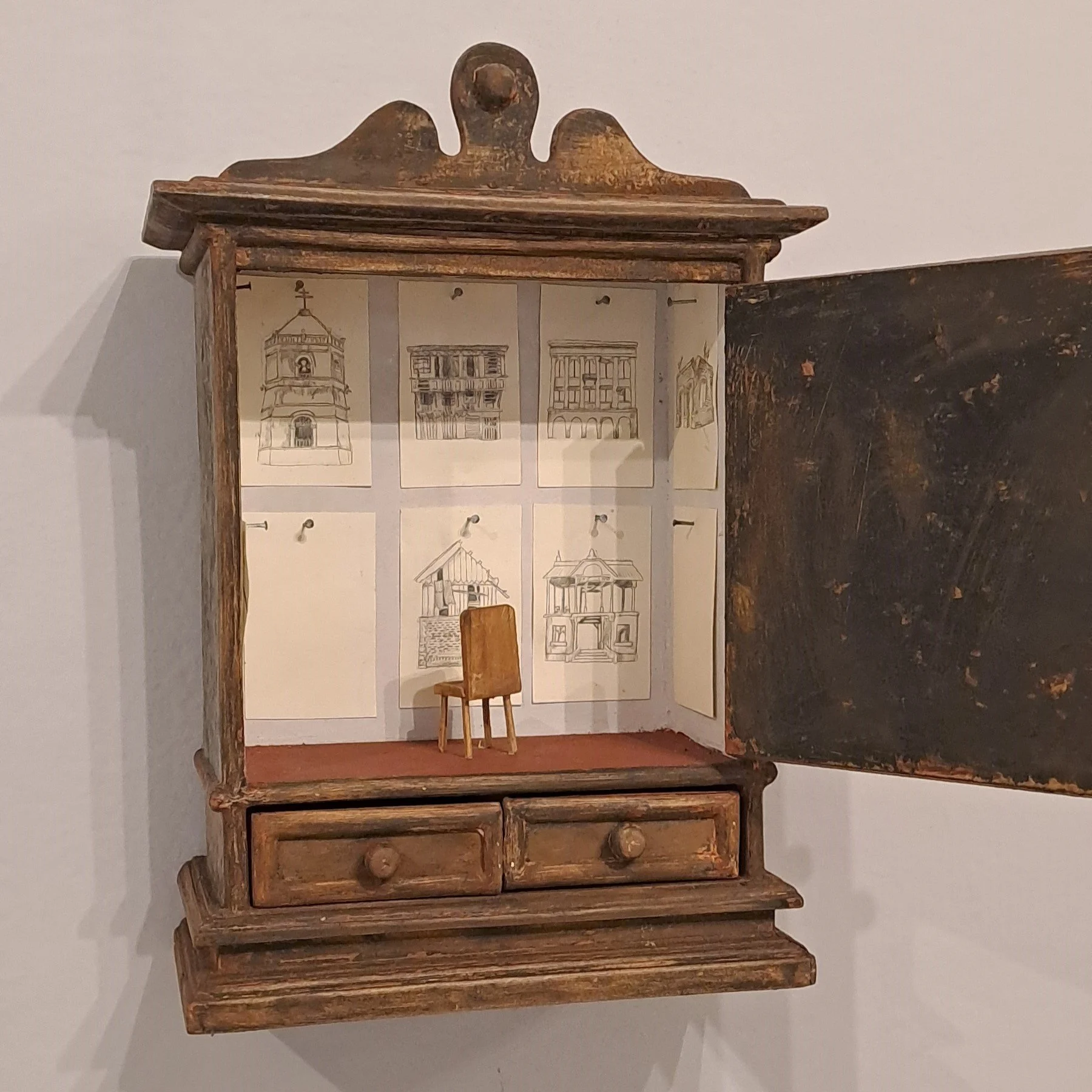History, Folklore, and the Artist’s Gaze
A review of Isabelo’s Ghost at the NCCA Gallery
Words & Photos Marz Aglipay
January 4, 2025
Isabelo delos Reyes, a pioneer in archiving Philippine folklore, left behind a wealth of literature ripe for interpretation. This raises the question: Who is best suited to decipher its meanings and contexts? Is it historians, or could artists, who bring fresh perspectives to cultural and historical narratives, offer the most compelling insights into the layers of delos Reyes’ legacy?
Delos Reyes, also fondly called Don Belong, a distinguished journalist and historian, is perhaps best known for his prolific body of written work and ambitious attempt at documenting Philippine Folklore. He is the spectral presence woven into the fabric of the exhibition Isabelo's Ghost, which was exhibited at the National Commission for Culture and the Arts gallery last November.
Chad Montero, Jericho Moral, and Hannah Nantes responded to the challenges of addressing the gaps in information when documenting something as vast as Filipino folklore. The show was inspired by Nantes’ engagement with National Artist for Literature Resil Mojares’ book Isabelo's Archive and Delos Reyes’ El Folk-lore Filipino. She had several contemporaries in mind whose practices she felt would complement these source texts. “We found that the themes of the texts were a shared interest among ourselves,” Nantes said. Some of these themes include nationalism, alamat, pamahiin, panggagamot, and old beliefs, to name a few.
The premise of the show responds to a particular event: when Delos Reyes published an open call for writings, artifacts, and oral traditions, among other forms, with the aim of compiling a comprehensive compendium of local knowledge. Unfortunately, this effort failed to yield the outputs he had hoped for. After briefly shelving the idea, he would go on to ambitiously publish El Folk-Lore Filipino on his own. His two-volume work is often cited as an essential piece of Philippine folk literature and anthropology, written from his nationalist perspective.
Addressing the Gaps
This all-assemblage exhibition captures different facets of Delos Reyes' hyper-local and insurgent approach to journalism. Montero's pieces, as such, are individual cabinets of curiosity, displayed as a wall-bound assemblage. They contain allusions to the nuances found in the making of El Folk-Lore Filipino. "May isang work ako (Tipon) na inspired sa nakita ko sa San Agustin Church. May nakita kasi akong wall sa loob na dati siyang daanan tapos sinara, sinemento, pero kita pa din yung bakas na dati siyang daan. Sumagi sa isip ko kasi nangyari na 'yon sa kasaysayan natin. Maraming tinakpan at binura sa ilalim ng ilang daang taong pagkakasakop ng mga Kastila. Kaya maraming puwang sa kwento ng identidad natin kasi maraming binura sa alaala,” he shared.
Moral leans into his painterly tendencies with a series of tiny drawings, each acting as an illustrative aide to the fantastical and otherworldly folktales in Delos Reyes’ book. His assemblage mimics a small gallery curated according to specific themes, one of which documents the structures of Intramuros, creating a strong connection between the works and the venue.
Nantes’s ambiguous figures, each housed in their respective cubbies, resemble retablos and engage with the context of the gallery’s proximity to recognizable churches. While the figures are not direct representations of religious icons, their assembly may suggest otherwise. The artist further explores our culture of venerated images, particularly how their installation in such a manner lends an air of veneration. “One of the things I wanted to explore in the series is how gaps in an archive or collection—or gaps in the knowledge of history—create fertile ground for speculation, or, at its most damaging, distortion, which amplifies rhetoric,” she said of her work.
Each piece invites a lingering gaze, much like when you’re supposed to be cleaning but get caught up in the nostalgic allure of familiarity or a detail you hadn’t noticed before. Aesthetically, the works in Isabelo's Ghost conjure the original contexts of anik-anik—the act of amassing small, sentimental or trivial items kept for personal reasons. This aspect of the exhibition highlights the notion that “the Filipino is a maximalist,” as former Commissioner of the National Commission for Culture and the Arts, Felipe de Leon, Jr., put it.
In a way, it circles back to Delos Reyes’ desire to document and preserve as much as possible. We continue to see this tendency evolve in the changing meaning of anik-anik—now an obsession with plastic and vinyl collectibles, which can serve as a form of self-expression and, perhaps, a marker of one’s interests and spending power.
One critique I have of the exhibit is the feeling of sparseness in the gallery, considering that all the works are wall-bound. The pieces are individually busy assemblages—a microcosm of tales—that benefit from some visual breathing room. But like all exhibitions, a hard stop must be put in place. This desire to see more works will haunt me until the next chance I get to experience an exhibition like this.
The artists’ use of thoughtful imagery in their respective assemblages is almost like a nod to unseen cultural work, likely another manifestation of Isabelo’s ghost. These choice pieces mirror the act of archiving, an essential process in culture-building.
It is refreshing to revisit the legacy of a Filipino literatus through the medium of assemblage. As recent history has shown, propagating a single narrative can be damaging and only strengthens the machinery of king-making.
All things considered, Isabelo’s Ghost is not a reductive exhibition that focuses on one aspect of Delos Reyes' illustrious life; rather, it serves as a reminder of the often overlooked cultural work of archiving—which is the true ghost of this exhibition. To exorcise it requires more than just being a man of the cloth; it’s a shared responsibility that will fall to future generations.
References:
https://www.esquiremag.ph/long-reads/features/the-underrated-ilustrado-isabelo-de-los-reyes-was-a-filipino-renaissance-man-a2212-20190628-lfrm?ref=feed_1&s=i3j3rt5shttopbkivlmjt95fso
https://thecordillerareview.upb.edu.ph/wp-content/uploads/2021/06/6-TCR-I-1-Mojares-105-120.pdf
https://www.plarideljournal.org/wp-content/uploads/2016/06/2016-01-Labiste.pdf
https://legacy.senate.gov.ph/senators/former_senators/isabelo_delos_reyes.htm#:~:text=He%20made%20intensive%20researches%20on,Holandeses%20en%20Filipinas%20(1888)%3B








